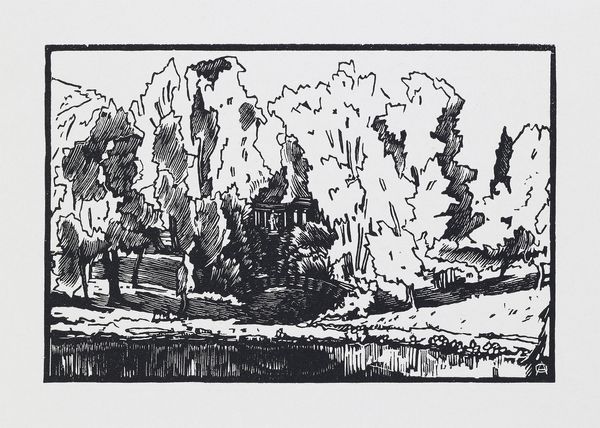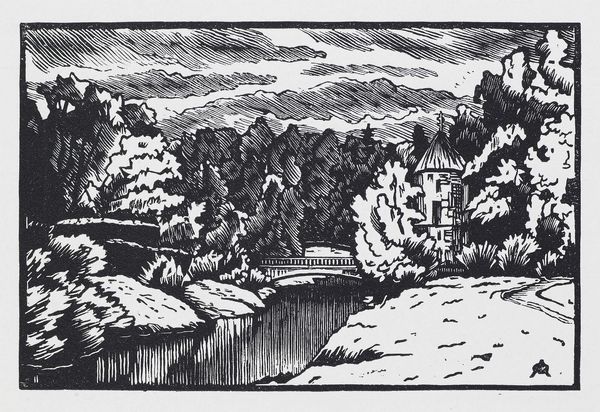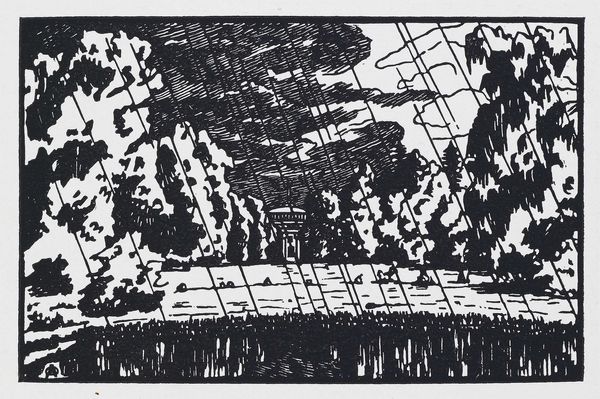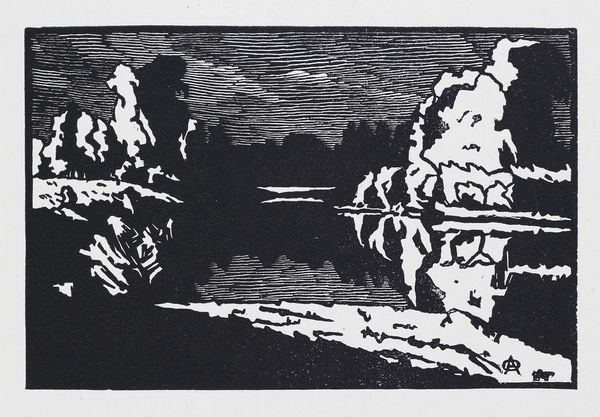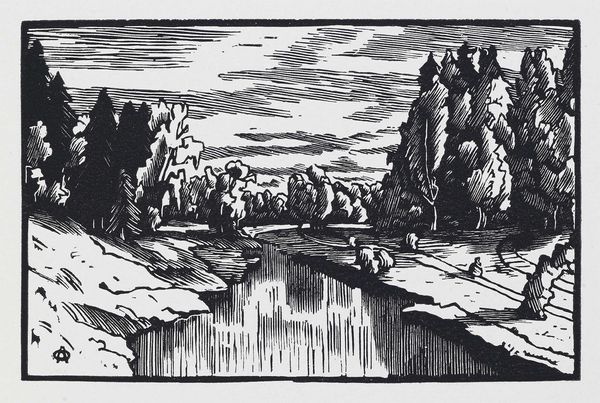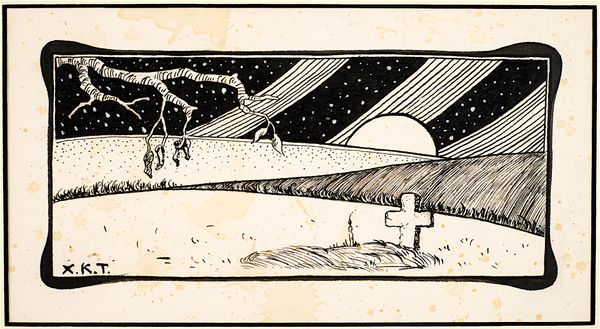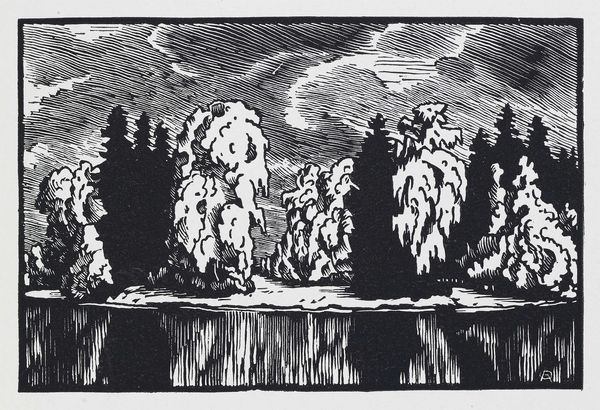
Copyright: Public domain US
Curator: Here we have Anna Ostroumova-Lebedeva’s "Landscape around the Viscontiev Bridge," a woodcut print created in 1923. What are your immediate impressions? Editor: Stark. The high contrast of black ink on the paper makes me think about the stark realities of Russia during the early Soviet era. Also, the composition emphasizes a somewhat idealized and picturesque view, possibly intentionally obscuring those hardships. Curator: Indeed. Ostroumova-Lebedeva was deeply invested in portraying St. Petersburg – Petrograd, then Leningrad – across various periods of upheaval. Prints like this, especially in the 1920s, often served ideological purposes. They helped to reconstruct and project certain narratives about progress and place. Editor: I wonder how her identity as a woman artist shaped her vision, in a society still wrestling with traditional gender roles even amidst revolution. The focus on a specific bridge could be seen as a deliberate centering of infrastructure, yet the framing feels intimate, almost domestic. Curator: Interesting observation. Ostroumova-Lebedeva worked within very specific art circles that shaped the way art was received and produced. She often had shows at the Society of Women Artists that became a symbol of the shift from a patriarchal social structure. But this piece is especially poignant because its simplicity can almost be radical in times when art can feel so exclusive. Editor: Absolutely, I can appreciate the bridge representing something beyond a simple landmark. Its function serves as a connection—of histories, experiences, people—which emphasizes themes of progress and the interconnectedness of that new Soviet state. It seems that Ostroumova-Lebedeva invites viewers to contemplate the very foundation upon which societal change rests. Curator: Thinking about it through an institutional lens, mass-produced prints allowed greater accessibility than paintings, engaging the wider population in envisioning their rapidly transforming world. It feels very intentional. Editor: Ultimately, this seemingly straightforward landscape unlocks layers of discourse surrounding place, progress, and identity during a transformative period. Thank you. Curator: Indeed, examining art with an intersectional lens always creates nuance.
Comments
No comments
Be the first to comment and join the conversation on the ultimate creative platform.
